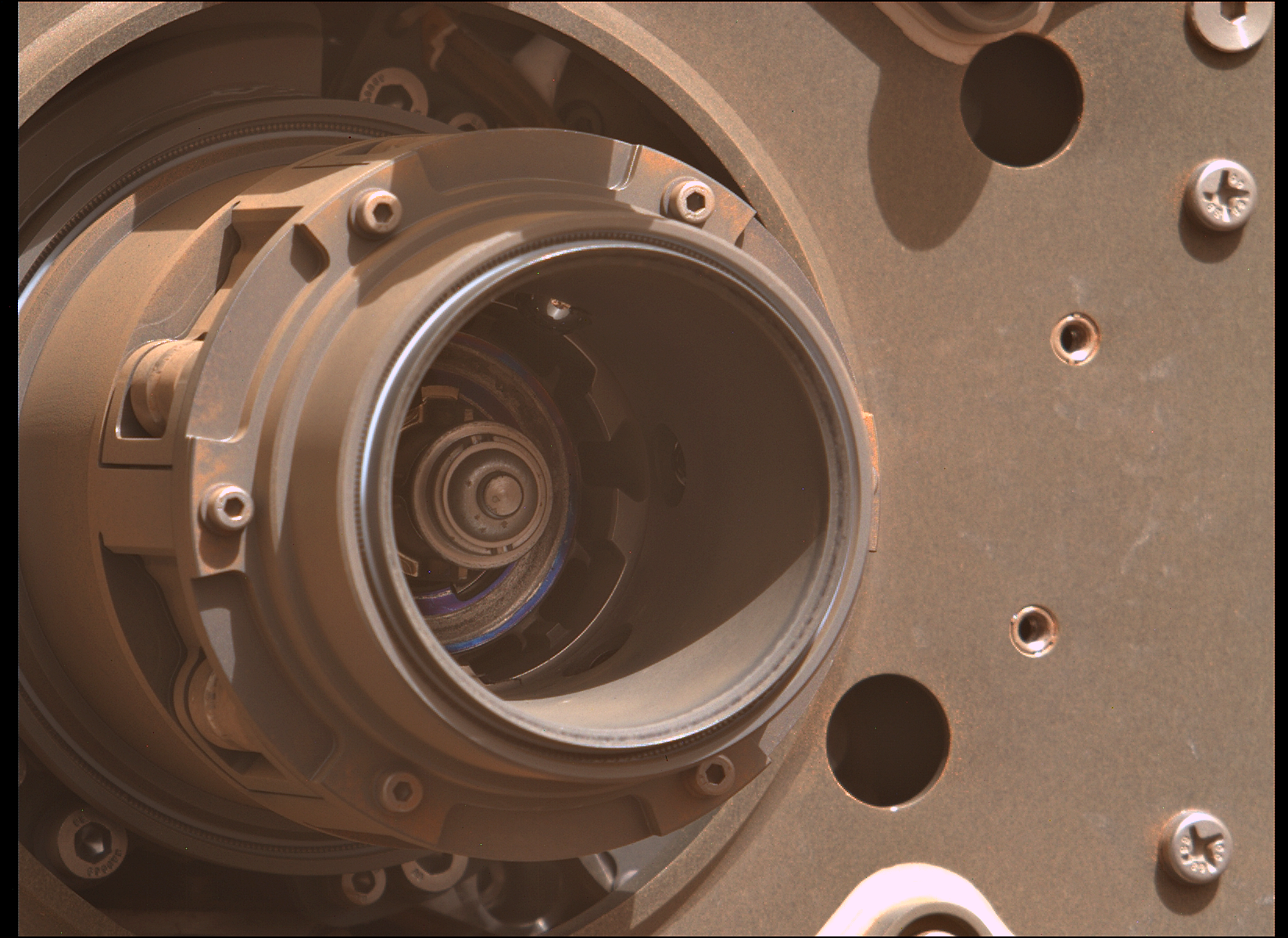that’s cool! I guessed either for camera scale purposes or luck and got pretty close!
You were spot on.
For those that don't want to follow the link....
The Lincoln penny in this photograph is part of a camera calibration target
The calibration target for the Mars Hand Lens Imager (MAHLI) instrument also includes color references, a metric bar graphic, and a stair-step pattern for depth calibration. The MAHLI adjustable-focus, color camera at the end of Curiosity's robotic arm can be used for taking extreme close-ups of rocks and soil on Mars, rover selfies, as well as images from greater distances.
The penny is also a nod to geologists' tradition of placing a coin or other object of known scale as a size reference in close-up photographs of rocks, and it gives the public a familiar object for perceiving size easily when it will be viewed by MAHLI on Mars.
The specific coin, provided by MAHLI's principal investigator, Ken Edgett, is a 1909 "VDB" penny. That was the first year Lincoln pennies were minted and the centennial of Abraham Lincoln's birth.
Why a 1909 penny? Curiosity was going to launch in 2009, the centennial of the Lincoln Cent and bicentennial of Lincoln’s birth. When the launch was delayed, Ken made the decision to stick with the historic 1909 cent rather than try to find a 1911 cent as the coin was bonded into the calibration target and had already been delivered to NASA.
And it was lucky, despite many issues along the way, Curiosity has been exploring Gale crater since August 2012. In that time it's amassed enough science data to keep scientists busy for years.










Looking at the current stats for this post, someone has made 24 cents :)